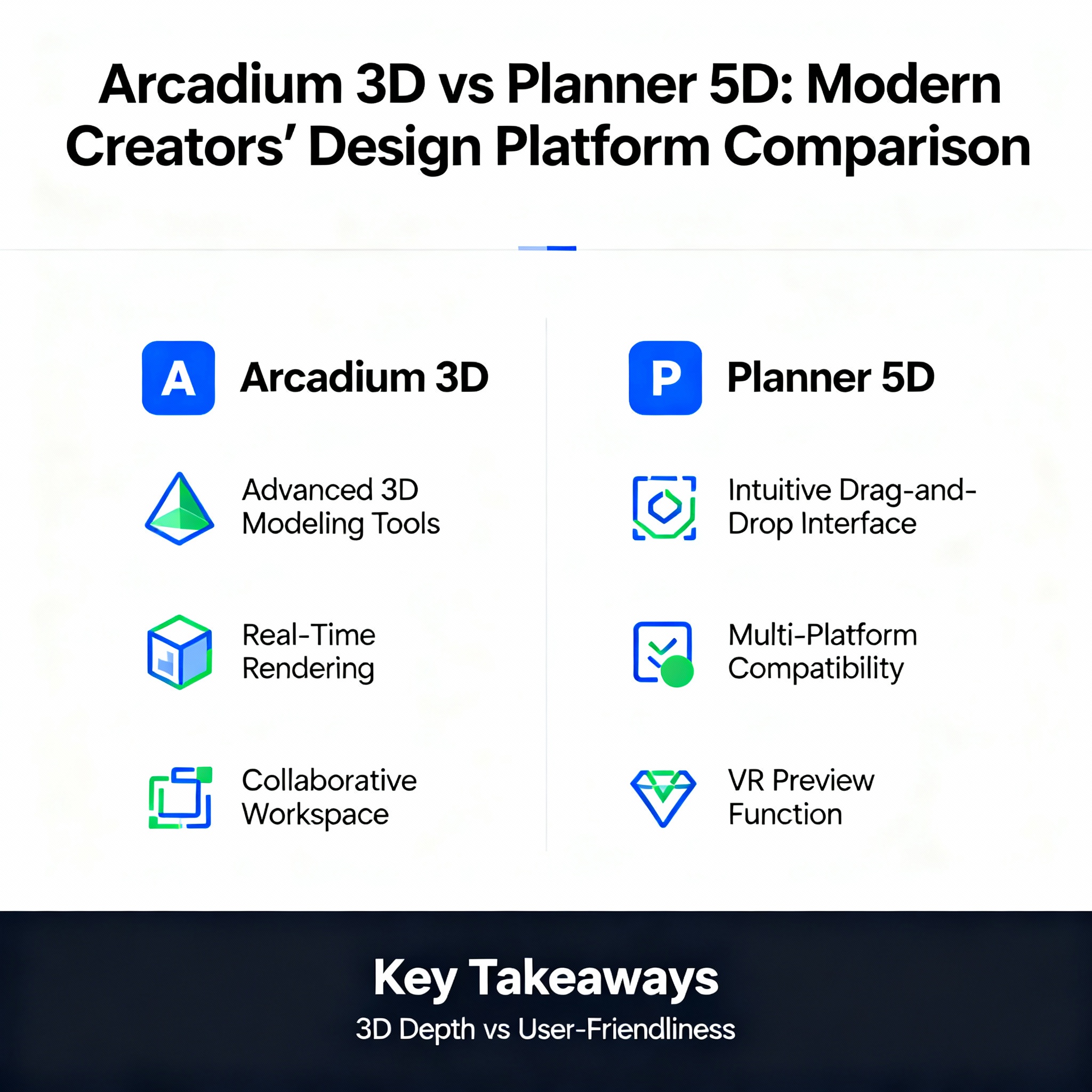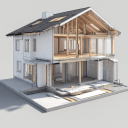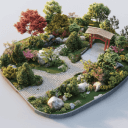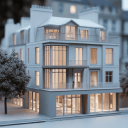In the realm of web-based home and interior design, both Arcadium 3D and Planner 5D let you sketch plans and build 3D models. From a professional designer’s perspective, Arcadium 3D generally delivers a faster, more precise workflow with real-time visuals, while Planner 5D brings broad platform support and simple starter features.
The sections below compare their usability, platform support, modeling controls, rendering quality, mobile/VR access, AI tools, and pricing. We note Planner 5D’s strengths (mobile apps, template gallery, AR/VR) but highlight where Arcadium’s browser-based speed, live rendering, smart objects, and precision modeling set it apart.
Quick Comparison Summary to Choose
The table below highlights how Arcadium 3D and Planner 5D stack up on key points:
Feature
| Arcadium 3D
| Planner 5D
|
Accessibility
| Web-based (no download); start instantly in any modern browser. Works on any device via browser. | Native apps for Windows, macOS, iOS, Android, plus web. Offers Apple VisionPro/VR and AR features. |
Ease of Use
| Very intuitive drag‑and‑drop. A hybrid 2D/3D editor with real-time updates means a short learning curve. | Beginner-friendly, guided interface; however, some advanced settings are buried in menus. |
Modeling Precision
| Supports exact dimensions and snapping. Parametric objects auto-adjust (auto-stairs, smart windows). | Freeform resizing of walls/objects; no true parametrics. Scaling can distort textures; it lacks automatic space-filling features. |
Smart Object Control
| Intelligent architecture tools (auto-generated stairs, embedded rules for doors/windows) save hours. | Basic furniture models rely on Smart Wizard for layout. No built-in parametric furniture (drawers/shelves won’t auto-replicate). |
Library & Templates
| Thousands of modern objects with editable materials can import custom textures. No premade room templates, design from scratch for flexibility. | Large built-in catalog (8K+ items) and many room templates/design ideas. Some free models look stylized; HD versions often require Premium. |
Rendering & Visualization
| Real-time, physically based renderer in-browser (instant lighting and shadows). Immersive first-person walkthrough included. | Real-time 3D preview is simpler; professional-quality images are rendered on servers. 4K snapshots are possible (free tier limited, Pro unlimited). |
AI Tools
| AI Interior Design generator for instant photoreal or stylized images from your scene. | AI Designer and Smart Wizard for auto floor plans and furniture arrangement; AI plan recognition (image→3D). |
Mobile/VR/AR
| Web app on mobile browsers; no separate VR/AR mode. Designs can be explored via a shared link with a browser walkthrough. | Native mobile apps for on-site edits; supports 360° panoramas, Apple Vision Pro, and AR-driven 3D projection for immersive viewing. |
Free vs Paid
| Free plan (2 projects, 50 objects). Pro plan €16/mo (annual) for unlimited projects, objects, and extra AI credits. | Free plan (unlimited projects, basic library). Premium ($59.99/yr) adds AI tools and limited HD renders. Professional ($399.99/yr) adds unlimited 4K, imports, etc. |
Usability and Interface
Arcadium 3D is built for speed and ease. It runs entirely in the browser with an intuitive 2D/3D hybrid interface, so beginners can draw walls and drag furniture almost immediately. Sketching a floor plan and placing objects feels natural, and dynamic tooltips and drag‑and‑drop make learning fast.
In fact, one review found “Arcadium delivers the shortest path from blank canvas to usable plan” because its workflow lets you sketch in 2D and “instantly ‘walk’ the space”. The UI is uncluttered and consistent, with advanced numeric input and snapping available for detail. By contrast, Planner 5D’s interface is also friendly but has a more “game-like” feel. It hides many settings in menus and uses guided “wizards,” which can slow down precise work.
Novices appreciate Planner’s simple templates and Design Battle gallery, but power users often note that snapping walls accurately requires extra care and that large projects can be harder to set up quickly.
Arcadium 3D: Browser-based, instant start (no download). Hybrid 2D/3D sketching is beginner-friendly but precise enough for pros.
Planner 5D: Cross-platform native apps (Windows/Mac/iOS/Android); uses drag‑and‑drop and “Smart Wizard” guides. Easy at first glance, but advanced options are less visible.
Platform and Device Support
Arcadium 3D is fully web-based, so it works on any modern browser (Windows, macOS, Linux, Chromebooks, even mobile browsers). You just open the site and start designing. There’s no installer needed. All tools and your projects live in the cloud, and you can share your designs via a simple URL. This means Arcadium is immediately available on new devices and can run on low-spec hardware too.
In contrast, Planner 5D offers a mix of native apps and web access. It has dedicated apps for iOS, Android, Windows, and macOS, plus a web version. Planner even supports Apple’s VisionOS (VR headset) and has AR-driven projection features (e.g., preview furniture in your space with AR). The native apps can leverage device cameras and sensors (e.g., VR walkthroughs, stylus support on tablets). Arcadium does not have separate mobile apps; you use it in a browser on a tablet or phone.
Arcadium 3D: No installation; runs in any browser on desktop or mobile. Designs auto-sync in the cloud.
Planner 5D: Offers native apps (iOS, Android, Windows, macOS) plus web access. Supports AR/VR (Vision Pro, 360° panoramas, AR projection) for immersive viewing.
Modeling Precision and Smart Objects
Arcadium 3D excels at precision. You can enter exact measurements for walls, doors, windows, and furniture, and Arcadium’s “smart objects” adjust automatically. For example, dragging to resize a cabinet will replicate shelves and drawers to fit (a parametric behavior).
Arcadium also has auto‑generating stairs and intelligent windows/doors that automatically cut openings in walls. These features save time and avoid rework on dimensions. In short, Arcadium’s parametric architecture tools are “unmatched in the browser category” for accuracy.
Planner 5D offers more basic controls. You can drag to scale objects and walls, but there are limits: scaling furniture can distort textures (since it simply stretches the model), and internal details (like shelves) won’t adjust automatically. Planner’s Smart Wizard and AI Designer can auto-place furniture or even generate a room layout, but the objects themselves are mostly fixed-size catalog pieces.
Planner’s targets are homeowners and amateurs, so it permits only general resizing. For high-precision work (say, custom cabinetry or exact clearances), Arcadium’s numeric inputs and built‑in standards give it an edge.
Arcadium 3D: Numeric entry for exact dimensions; parametric components (auto-scaling shelves, auto-stairs, smart windows/doors).
Planner 5D: Free-form wall dragging and object scaling, but scaling distorts textures and won’t auto-adjust object details. Uses Smart Wizard for layout, but no advanced parametrics.
Libraries, Templates, and Customization
Both platforms include extensive object libraries, but they differ in style and accessibility. Arcadium 3D’s library contains thousands of modern items (sofas, beds, appliances, etc.) that are regularly updated.
Materials are editable in Arcadium: you can change fabrics, wood grains, metals with a click, or even import your own textures to match real products. Designers praise Arcadium’s selection as high-quality and up-to-date. Arcadium also provides a basic floor plan template but mainly relies on starting from scratch for maximum flexibility.
Planner 5D likewise boasts a large content catalog (over 8,000 items in premium inventory) and thousands of user-created templates (via its Design Battles and gallery). It includes many common furniture sets and pre-decorated rooms, which can be a quick start.
However, some users note that many Planner models look somewhat “cartoony” and lower-detail. True HD-quality objects and renders often require a paid plan. Material editing in Planner is more limited (usually only basic color changes) compared to Arcadium’s full textures.
In summary, Planner provides more ready-made templates and a gamified design gallery, while Arcadium offers a streamlined object library with powerful customization.
Arcadium 3D: Thousands of modern, professional-grade objects; fully editable materials and textures; import custom 3D models (Pro plan). No rigid templates, you design from a blank canvas.
Planner 5D: Large catalog (≈8,000+ items) and dozens of room templates; many items are free, but HD/high-detail versions come with Premium plans. Custom textures are limited; they rely on “room generator” wizards for quick layouts.
Rendering and Visualization Quality
Arcadium 3D shines in real-time visualization. Its in-browser lighting engine is physically based: as you drag a sun or lamp, shadows and reflections update instantly. There is no separate render queue; what you see is essentially a high-quality preview. The result is photorealistic output on the fly. An example Arcadium-generated render is shown below, demonstrating realistic light, materials, and fine detail (Figure):
Figure: A photorealistic interior rendered by Arcadium 3D’s AI-based visualization tool (styles and lighting applied in real time).
Planner 5D can also produce gorgeous results, but with a different approach. It offers 4K “snapshot” renders with advanced lighting, but these are often processed on the server. In practice, real-time editing in Planner shows a simpler 3D view (flat shading or basic lighting), and initiating a high-quality render requires waiting or using up rendering credits.
The free Planner tier only allows a few HD renders per month; the Professional plan unlocks unlimited 4K rendering. Because of this, Arcadium’s instant previews give designers faster visual feedback. In short, Arcadium provides live, true-to-life lighting in the editor, whereas Planner 5D’s best visuals typically come from queued cloud renders.
Arcadium 3D: Real-time, physically-based renderer right in the browser (instant shadows/reflections). No separate render time, what you see is close to the final output. Virtual walkthrough mode and multiple viewing angles are built in.
Planner 5D: Realistic 4K/HD renders (shadows, global illumination) but on a cloud backend. Real-time editor view is simpler; high-end rendering requires credits/wait time. Free users get limited monthly renders.
AI Tools and Automation
Both platforms embrace AI, but in different ways. Arcadium 3D offers an AI Interior Design tool that transforms your 3D model into polished images. You can apply various styles, add furniture, or even create sketch/watercolor views from the same design.
For example, a hand-drawn sketch of a bathroom can be turned into a photorealistic image in seconds. Arcadium’s AI focuses on visualization, helping you generate high-fidelity renderings and design variations automatically.
Planner 5D’s AI features are more about layout generation. Its Premium plan includes an AI Designer and Smart Wizard that can auto-generate a floor plan from an image or fill a room with furniture layouts. Planner also offers AI-driven floor plan recognition (you upload a sketch or image, and it auto-converts to 3D walls).
These tools accelerate the initial project setup. Both tools have their merits: Planner’s AI speeds up plan creation, whereas Arcadium’s AI excels at making your designs look professional and realistic in seconds.
Arcadium 3D: AI-powered interior rendering. Transforms your rough model into a photoreal or stylized image instantly. (Pro tier includes AI image credits for batch generation.)
Planner 5D: AI Designer and Smart Wizard to auto-generate layouts and décor. Includes AI floor plan recognition. Good for quickly populating a design, but pro-quality visuals still rely on traditional rendering.
Mobile, VR, and AR Features
Planner 5D was built with multi-device in mind, so it has strong mobile and VR support. It provides full-featured apps for iOS and Android, letting you design on the go. It also supports VR and AR: for instance, you can create a 360° panoramic tour of your space, or use AR to place designs into a real-world view.
The platform even targets Apple Vision Pro and similar systems (Planner 5D’s enterprise pitch mentions VisionOS and AR/VR support). This makes Planner 5D handy for client walkthroughs or immersive presentations.
Arcadium 3D does not have a standalone mobile app or dedicated VR mode. However, because it runs in a browser, it technically works on tablets and phones (modern mobile browsers can open it). Arcadium’s strength is the built-in virtual walkthrough mode: clients and collaborators can “walk through” the model in first person in their web browser.
You simply share the project link, and they can explore the design on desktop or mobile without logging in. In summary, for purely mobile or VR experiences, Planner 5D has more native features. But Arcadium still delivers a responsive design on any device with a browser, and real-time walkthrough viewing (though not true AR/VR headset support).
Arcadium 3D: Browser access on any device (desktop/tablet/phone). Features a first-person “walkthrough” view in-browser. No native AR/VR apps.
Planner 5D: Native iOS/Android apps with full editing tools. Supports 360° panorama exports, AR interior preview, and VisionOS VR (360°/AR view with compatible devices).
Pricing and Value
Arcadium 3D: Free plan (no cost) includes the core modeling tools and furniture library, but limits you to 2 active projects and 50 objects per project. Arcadium’s Pro subscription is €16/month (about $18) when billed annually (€192/year). Pro unlocks unlimited projects/objects, allows custom 3D model import, and provides 250 AI-generated images per month. Overall, Arcadium offers a very full feature set for free or low cost. The company stresses transparency: the free version is quite capable, and the paid tier is affordable compared to professional CAD tools.
Planner 5D: Also has a free tier with unlimited projects, but it has only basic features and ads. Its Premium subscription costs $4.99/month (or $59.99/year) and adds some AI tools, limited HD renders (5 per month), and additional library items. The Professional plan is $49.99/month (or $399.99/year), which unlocks unlimited 4K/HD renders, 3D model import (OBJ/FBX/etc.), unlimited custom textures, 360° panoramas, and business features (branded profile, portfolio). In effect, Planner 5D’s high-end tier is roughly double Arcadium’s cost for similar pro capabilities.
In summary, both have free versions, but Arcadium’s free use is more generous for trying out core functions. Arcadium’s paid plan is notably cheaper than Planner’s top tier. A high-level price comparison:
Feature
| Arcadium 3D
| Planner 5D
|
Free Plan
| Free core tools; 2 projects, 50 objects each | Free basic tools; unlimited projects but limited content |
AI/Rendering
| 250 AI renders/month (Pro); no extra cost for real-time 3D preview | Premium: 5 HD renders/month; Pro: unlimited 4K renders |
Models/Objects
| Thousands of objects, import allowed (Pro) | Access to 8K+ items (premium catalog); unlimited import (Pro) |
Price
| Free; Pro €192/year (~$210) | Premium $59.99/year or $19.99/mo; Professional $399.99/year ($49.99/mo) |
Arcadium’s lower price and robust free tier make it an excellent value for both hobbyists and pros, whereas Planner 5D requires more spending to access its full feature set.
Frequently Asked Questions
Which tool is easier for a beginner 3D designer?
Arcadium 3D has a very gentle learning curve. Its clean interface and hybrid 2D/3D editor let you sketch walls and place furniture without digging through menus. A user can drag in objects and immediately see the result. Planner 5D is also designed for non-experts, with guided layouts and wizards. However, the Planner’s interface can feel somewhat game-like and may hide advanced controls behind additional steps. In practice, many new users find Arcadium quicker to pick up for first-time layout work.
Do I need to install anything?
Arcadium 3D works entirely in your browser, no download or installation. You sign up on the website and start designing on any computer or mobile device with internet. All your projects are saved in the cloud. Planner 5D offers both a web version and native apps. You can design in your browser too, but they also provide downloadable apps for Windows, macOS, iOS, and Android. If you prefer a desktop application or want to work offline on Windows/Mac, use their desktop app. Mobile and tablet editing requires the Planner 5D apps.
How do their renderings compare?
Arcadium’s renderer is real-time and built in. As you change light or materials, the view updates instantly with realistic lighting, shadows, and reflections. There’s no separate “render” step for most visuals. You get a near-final-quality preview immediately. Planner 5D can produce very high-quality 4K images, but it does so on a server. In-editor, Planner shows a simpler live view; when you want a “snapshot” with realistic lighting, you initiate a render (which may take time or use up credits). In short, Arcadium gives you instant photoreal previews as you design, whereas Planner 5D’s best-quality images are post-processed separately.
What AI features do they offer?
Both have AI, but their focus differs. Planner 5D’s Premium plan includes an AI Designer and Smart Wizard that can automatically generate a floor plan or layout for you (for example, converting a hand-drawn plan into a 3D model). It speeds up initial planning. Arcadium’s AI tools are geared toward visualization. Its “AI Interior Design” tool takes your Arcadium model and instantly creates styled, photoreal images or even sketches of it. In practice, Planner’s AI helps fill rooms and plans quickly, while Arcadium’s AI helps you get beautiful renders or style variations instantly.
Can I use these on mobile devices or in VR?
Planner 5D is very mobile-friendly: it has full-featured iOS and Android apps, so you can design on tablets or phones. It also supports VR (e.g., Vision Pro) and AR features for immersive viewing. Arcadium 3D doesn’t have a separate mobile app, but it will run in a mobile browser, so you can use it on tablets/phones. It includes an in-app walkthrough mode so anyone can tour your design in 3D via a shared link. However, Arcadium does not offer built-in AR/VR headset features; it’s a browser app, not a native VR application. If an AR/VR presentation is a priority, Planner 5D has more out-of-the-box support.
How much do they cost?
Arcadium 3D is free to use with core features (limited to 2 projects of 50 objects each). Its paid Pro plan ($18/month paid annually) unlocks unlimited projects, unlimited objects, custom model import, and extra AI image credits. Planner 5D has a free version with basic tools. Its Premium plan costs $59.99/year and adds some AI tools and limited HD renders. The Professional plan is $399.99/year ($49.99/mo), which enables unlimited 4K renders, 3D model import, 360° panoramas, and business features. In short, Arcadium’s free version is quite capable, and its Pro plan is significantly cheaper than Planner 5D’s top tier.
Which is better for professional designers vs casual users?
Arcadium 3D is aimed at both professionals and serious hobbyists. Its precision controls, real-time rendering, and freeform browser workflow give professional designers more power and flexibility. Planner 5D excels for DIY home designers, real estate, or quick mockups. Its friendly gallery of templates and mobile support make it handy for non-experts. However, many pros appreciate Arcadium’s parametric accuracy and seamless performance. As one review noted, Arcadium offers “pro-grade capabilities” on a zero-dollar budget. For polished client presentations or detailed plans, Arcadium tends to deliver higher-quality results with less effort.
Conclusion
For modern creators, Arcadium 3D generally delivers more power and performance. It combines a smooth, install-free workflow with intelligent modeling tools and true real-time rendering. Designers can work fast and accurately without sacrificing visual quality.
Planner 5D remains a solid choice for easy entry, especially if you need mobile apps or VR/AR features. But when comparing core capabilities, Arcadium’s advantages are clear: live lighting updates, automatic object behaviors, and an AI-assisted pipeline all push it ahead for professional use.
We recommend trying Arcadium 3D to experience the difference. In minutes, you can draw a floor plan, furnish it, and spin the sun around watching a blank canvas become a fully realized 3D space. As one industry write-up concludes, “No other free tool gets you from idea to ‘aha!’ moment faster”. Ready to see it yourself? Start a free Arcadium 3D project today and see how quickly it brings your vision to life.
You can check our other comparison contents:
Arcadium 3D vs RoomSketcher: Floor Plans to First-Person Tours
Arcadium 3D vs Homestyler: Browser Performance With Large Rooms
Arcadium 3D vs Floorplanner: Sharing Links and Client Walkthroughs
Arcadium 3D vs Cedreo: DIY Speed versus Professional Design Outputs
Arcadium 3D vs HomeByMe: Which Platform Balances Speed, Control, and Visual Power Best
Arcadium 3D vs Sweet Home 3D: Which Design Platform Delivers Speed, Flexibility, and Visual Impact
Arcadium 3D vs SketchUp: Which Design Tool Fits Your Workflow?
Arcadium 3D vs Roomstyler: Choosing the Right Tool for Speed, Precision, and Creative Freedom
Arcadium 3D vs SmartDraw: Floor Plans, Elevations, and Exports


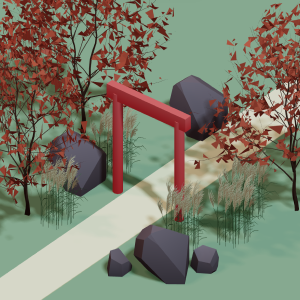 All training, tips and articles
All training, tips and articles
 3D house design tool
3D house design tool
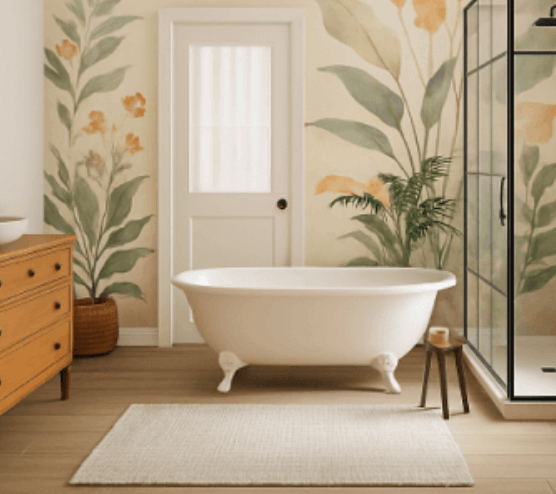
 Color palette generator
Color palette generator
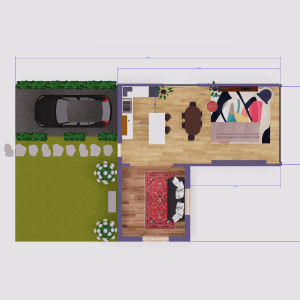 Floor plan creator
Floor plan creator
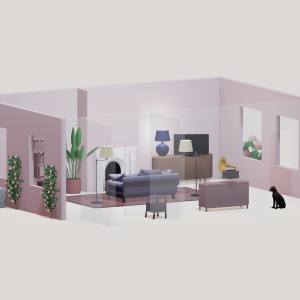 Interior design app
Interior design app
 Kitchen design tool
Kitchen design tool
 House design software
House design software
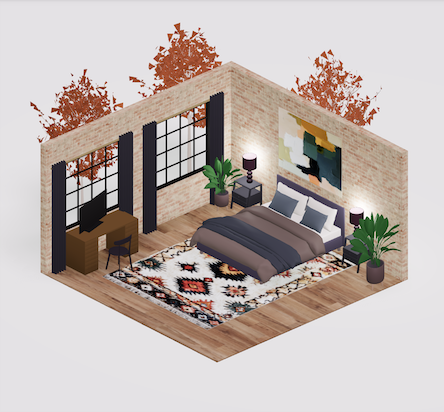 Room designer
Room designer
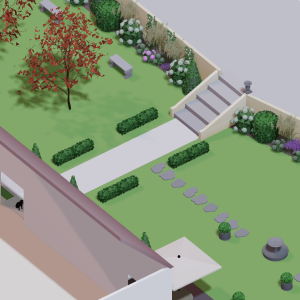 Landscape design software
Landscape design software
 Bedroom design
Bedroom design
 Office floor plan creator
Office floor plan creator
